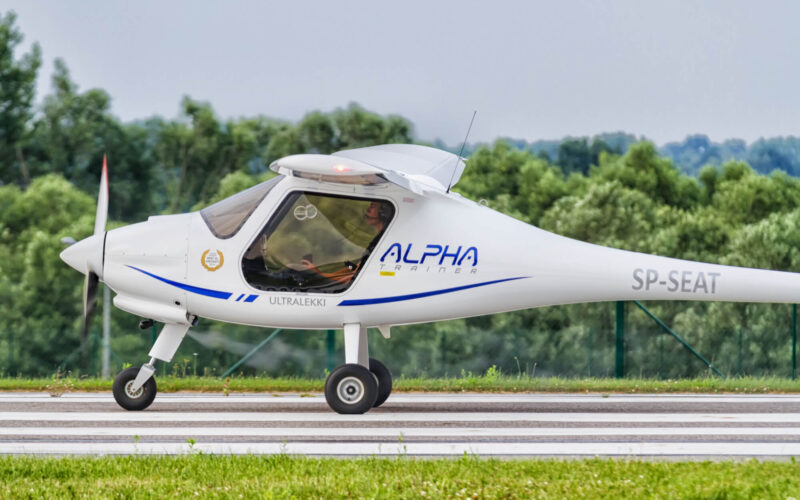Mesa Airlines has come up with a new solution to the pilot shortage in the United States. The regional carrier is ordering up to 104 Pipistrel light aircraft that it will use to help pilots build hours before they can fly commercial aircraft.
The order comprises the purchase of 29 Pipistrel Alpha Trainer 2 aircraft, with the option to buy an additional 75 over the next year.
The new fleet of Pipistrel two-seater aircraft will form the backbone of the Mesa Pilot Development Program (MPD), the airline announced on September 22, 2022.
Before they can work at a commercial airline in the United States, pilots must accrue 1,500 hours of flying time to achieve their Airline Transport Pilot certificate (ATP). The 1,500-hours rule has been cited as one of the reasons behind the current pilot shortage in North America.
“The pilot shortage could become a permanent feature of the airline industry if we don’t get more aviators into the system,” commented Jonathan Ornstein, Chairman and CEO of Mesa. “It is basic math. If there aren’t enough trained pilots, customers suffer from loss of service and high-ticket prices.”
FAA turns down airline request to hire less-experienced pilots during shortage
What has caused the current pilot shortage in the United States?
Have US airlines done enough to keep their pilots?
How much will it cost?
Mesa said that pilots who join its pilot development program will be offered up to 40 hours of flight time each week. The costs will be covered by Mesa with the pilot then repaying the money during the first three years of their employment with the airline.
“Our program will be the most cost effective and one of the fastest routes to a long-term career as a professional pilot,” said John Hornibrook, SVP Flight Operations. “We want to make it as easy as possible for a whole new field of candidates to join Mesa, including and especially people who might not have traditionally considered aviation.”
Mesa said that the 1,500-hour rule means that newly licensed pilots may have to pay up to $250,000 to accumulate enough flight hours to qualify to fly for a commercial carrier, with the process often taking two to three years.
“Mesa’s Pilot Development program is an example of the private sector working to solve the challenges created by new regulations,” Ornstein said. “No other country in the world has adopted the 1,500- hour rule. This creates a situation where many foreign licensed pilots can fly over this country and into some of the world’s busiest airports even though they would not be considered experienced enough to fly a commercial aircraft by the FAA.”
In Europe, for example, newly licensed pilots are permitted to start working for commercial airlines as soon as they finish flight school.
Mesa added its first year pay rate of $100/hour is currently the highest in the regional industry and added its pilots are also eligible to join United’s Aviate program which offers a way to flying for the major US carrier.
The regional carrier, headquartered in Phoenix, Arizona, operates a fleet of 168 aircraft with approximately 360 daily departures and 2,600 employees.

